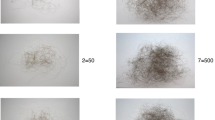Abstract
Background
Sunscreen use is an important modifiable behavior to protect against skin cancer, photoaging, and sunburn. Product costs and characteristics may influence accessibility and usage of sunscreen. This study aims to determine preferences for sunscreen attributes and willingness to pay (WTP) for an ideal sunscreen product.
Methods
Adult volunteers 18 years or older were contacted on ResearchMatch. Of 670 responses, 489 surveys were completed and 2 were excluded based on the inclusion criterion. Online survey responses were collected in REDCap from July–September 2019. The online survey queried sunscreen attribute preferences and then respondent preferences were compiled into individualized descriptions of ideal products. Respondents were then asked to make purchasing decisions on these products. WTP was determined by analyzing product attributes and purchasing decisions. Attribute preferences were reported as numerical ratings of Importance and Desirability. WTP was calculated by linear regression of purchasing decision data. Qualitative comments about sunscreen preferences were also collected.
Results
The study involved 487 participants aged 18–85 years (mean 43.6, SD 15.7) and 84.4% (N = 411) female. The most popular attributes included complete prevention of skin cancer and sunburn. WTP for an ideal product was $30.10 ± 2.11 for one month of use.
Conclusions
Consumers provide high values in WTP for sunscreen. Dermatologists should consider cost and variability in attribute preferences when recommending sunscreens to patients. Further study is required to determine the effects, if any, of cost and attributes on adherence to sunscreen use in specific populations.
Similar content being viewed by others
Data availability statement
Data is available on request.
References
Lazovich D, Vogel RI, Berwick M et al (2011) Melanoma risk in relation to use of sunscreen or other sun protection methods. Cancer Epidemiol Biomarkers Prev 20:2583–2593. https://doi.org/10.1158/1055-9965.EPI-11-0705
Hughes MCB, Williams GM, Baker P, Green AC (2013) Sunscreen and prevention of skin aging: a randomized trial. Ann Intern Med 158:781–790. https://doi.org/10.7326/0003-4819-158-11-201306040-00002
Sander M, Sander M, Burbidge T, Beecker J (2020) The efficacy and safety of sunscreen use for the prevention of skin cancer. CMAJ 192:E1802–E1808. https://doi.org/10.1503/cmaj.201085
Holman DM, Ding H, Guy GP Jr et al (2018) Prevalence of sun protection use and sunburn and association of demographic and behaviorial characteristics with sunburn among US adults. JAMA Dermatol 154:561–568. https://doi.org/10.1001/jamadermatol.2018.0028
Mahé E, Beauchet A, de Maleissye M-F, Saiag P (2011) Are sunscreens luxury products? J Am Acad Dermatol 65:e73–e79. https://doi.org/10.1016/j.jaad.2010.06.043
Johal R, Leo MS, Ma B, Sivamani RK (2014) The economic burden of sunscreen usage. Dermatol Online J 20(6)
Xu S, Kwa M, Agarwal A et al (2016) Sunscreen product performance and other determinants of consumer preferences. JAMA Dermatol 152:920–927. https://doi.org/10.1001/jamadermatol.2016.2344
Bateman IJ, Brouwer R, Georgiou S et al (2005) A ?Natural experiment? Approach to contingent valuation of private and public UV health risk reduction strategies in low and high risk countries. Environ Resour Econ 31:47–72. https://doi.org/10.1007/s10640-004-6978-7
Harris PA, Taylor R, Thielke R et al (2009) Research electronic data capture (REDCap)–a metadata-driven methodology and workflow process for providing translational research informatics support. J Biomed Inform 42:377–381. https://doi.org/10.1016/j.jbi.2008.08.010
Harris PA, Taylor R, Minor BL et al (2019) The REDCap consortium: Building an international community of software platform partners. J Biomed Inform 95:103208. https://doi.org/10.1016/j.jbi.2019.103208
Breidert C, Hahsler M, Reutterer T (2006) A review of methods for measuring willingness-to-pay. Innovative marketing 2:
Johal R, Leo MS, Ma B, Sivamani RK (2014) The economic burden of sunscreen usage. Dermatol Online J 20:
Ein-Gar D, Goldenberg J, Sagiv L (2008) Taking control: an integrated model of dispositional self-control and measure. Adv Consumer Res. https://papers.ssrn.com/abstract=1294390
Almuqati RR, Alamri AS, Almuqati NR (2019) Knowledge, attitude, and practices toward sun exposure and use of sun protection among non-medical, female, university students in Saudi Arabia: a cross-sectional study. Int J Women’s Dermatol 5:105–109. https://doi.org/10.1016/j.ijwd.2018.11.005
Knight JM, Kirincich AN, Farmer ER, Hood AF (2002) Awareness of the risks of tanning lamps does not influence behavior among college students. Arch Dermatol 138:1311–1315. https://doi.org/10.1001/archderm.138.10.1311
Ashinoff R, Levine VJ, Steuer AB, Sedwick C (2009) Teens and tanning knowledge and attitudes. J Clin Aesthet Dermatol 2:48
Song H, Beckles A, Salian P, Porter ML (2021) Sunscreen recommendations for patients with skin of color in the popular press and in the dermatology clinic. Int J Womens Dermatol 7:165–170. https://doi.org/10.1016/j.ijwd.2020.10.008
Barnard AS, Louviere JJ, Wei E, Zadorin L (2016) Using hypothetical product configurators to measure consumer preferences for nanoparticle size and concentration in sunscreens. Design Sci. https://doi.org/10.1017/dsj.2016.12
Solky BA, Phillips PK, Christenson LJ et al (2007) Patient preferences for facial sunscreens: a split-face, randomized, blinded trial. J Am Acad Dermatol 57:67–72. https://doi.org/10.1016/j.jaad.2007.04.003
Acknowledgements
This project is supported by the Northwestern University Department of Dermatology, Department of Medical Social Sciences, and the Galter Health Sciences Library. Special thanks to Kathryn L. Jackson for statistical consultation, Molly Beestrum for literature consultation, and Brandon Caldwell and Vivian Wan for R support.
Funding
None.
Author information
Authors and Affiliations
Contributions
HH, SP, and RVK wrote the main manuscript text. HH and SP led data analysis and prepared Tables 1–4. All authors reviewed the manuscript and approved the submission.
Corresponding author
Ethics declarations
Conflict of interest
The authors declare no competing interests.
IRB approval status
This study was deemed exempt by the institutional review board at Northwestern University.
Additional information
Publisher's Note
Springer Nature remains neutral with regard to jurisdictional claims in published maps and institutional affiliations.
Rights and permissions
About this article
Cite this article
Hanna, H., Patel, S. & Kundu, R.V. Cost and quality in consumer sunscreen preferences. Arch Dermatol Res 315, 925–931 (2023). https://doi.org/10.1007/s00403-022-02467-4
Received:
Revised:
Accepted:
Published:
Issue Date:
DOI: https://doi.org/10.1007/s00403-022-02467-4




